How to Fix “DEV ERROR 6068” in Call of Duty Modern Warfare?
Call of Duty: Modern Warfare sometimes crashes with a black screen and shows “DEV ERROR 6068” when loading a game. This usually happens because of problems with your computer’s graphics system, like outdated drivers, too much memory use, or the wrong settings.
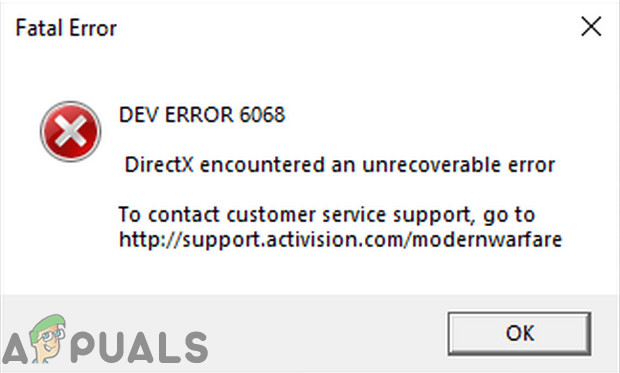
Most often, this error shows up when your computer can’t handle high graphics settings. Other causes can be things running in the background, issues with your computer’s memory, or if you’ve overclocked your hardware.
Before going into the main solutions, try these quick tips:
- If you use multiple displays, try playing with only one monitor connected to see if the problem goes away.
- Check if other games work normally on your system.
- Make sure your system’s RAM is running at 3000 MHz, which the game recommends for smooth performance.
- Ensure you have a stable and fast internet connection.
In this article, we’ll look at several ways to fix this error and help you get back to playing without interruptions.
1. Run the Game as Administrator
Permissions can greatly impact game performance. By running the game as an administrator, Call of Duty bypasses typical Windows restrictions. This gives the game full access to any files or resources it needs.
- Open the Battle.net launcher and go to the Call of Duty page.
- Click on Options.
- Now click “Show in Explorer.”
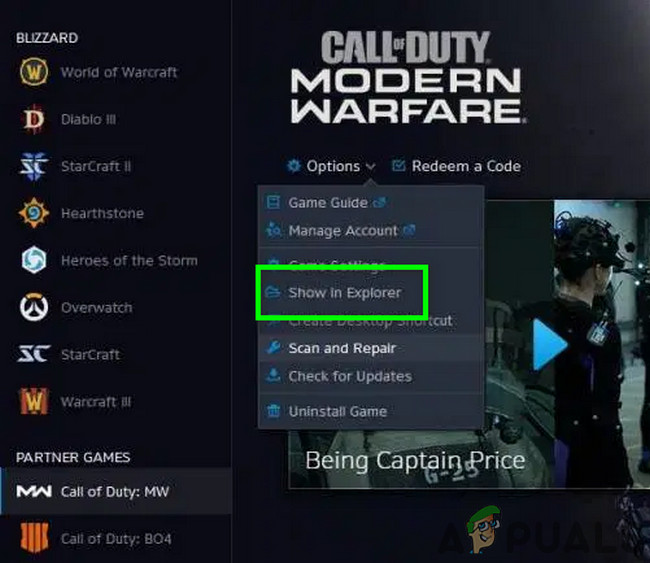
Show Call of Duty in Explorer - In the Call of Duty folder, find and right-click on the Call of Duty file (the file with the .exe extension).
- From the menu, select “Run as administrator” and see if this resolves the issue.
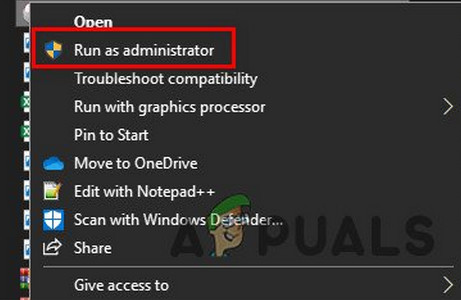
Run the Call of Duty as Administrator
2. Set the Priority of Call of Duty’s Process to High
Setting Call of Duty’s process priority to high tells your computer to dedicate more CPU power to the game, helping it run better and reducing the chances of interrupted gameplay from background processes.
- Right-click anywhere on the Task Bar and select Task Manager.
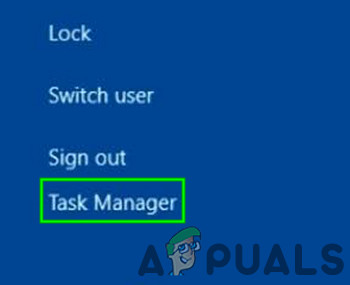
Open Task Manager - Find and right-click the Call of Duty process, then choose Go to Details.
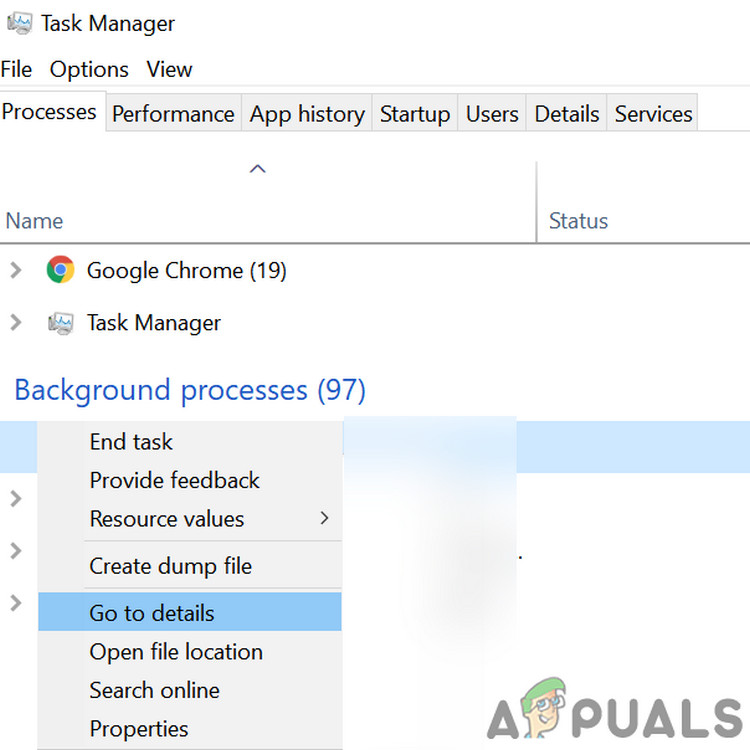
Open Details of the Call of Duty Process - On the Details tab, right-click the highlighted Call of Duty process, choose Set priority, and then click High.
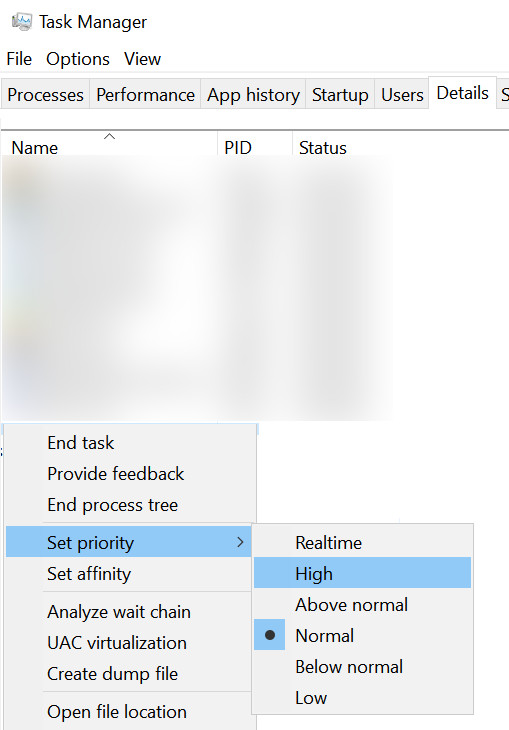
Set the Priority of Call of Duty’s Process to High - Check if the game now runs smoothly.
3. Update Windows and System Drivers to the Latest Build
Keeping Windows and your drivers up to date is essential, as older versions may lack important fixes and improvements. Installing all available updates and drivers helps resolve compatibility issues and delivers a better overall gaming experience.
- Press the Windows key and type Updates. Select Check for Updates from the search results.
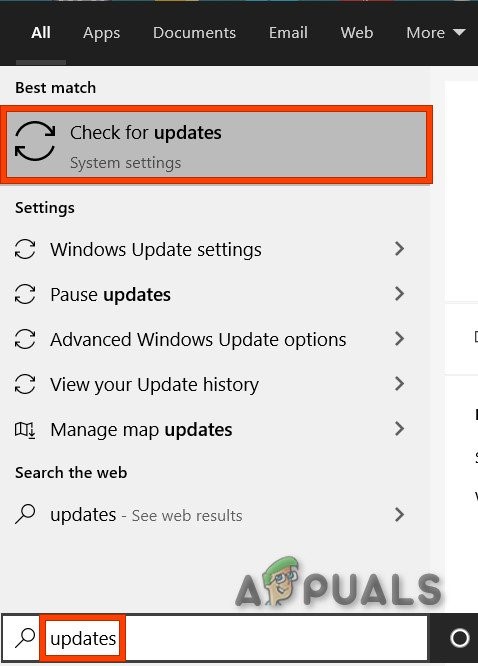
Check For Updates in Windows Search Box - Click the Check for Updates button.
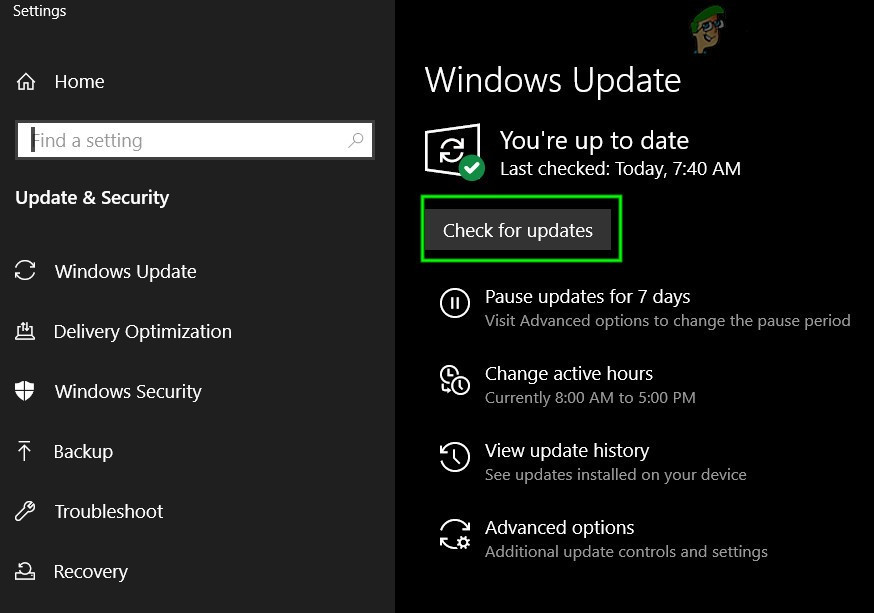
Check for Updates in Windows Update - Download and install any available updates.
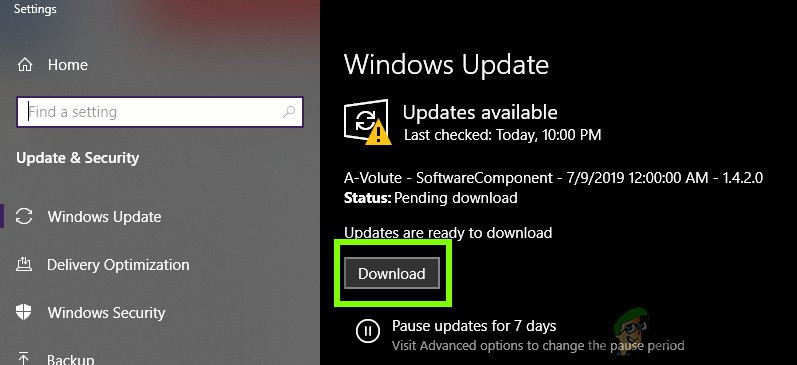
Check For Updates in Settings - Download the Windows Update Assistant for any major Windows updates.
- Run the downloaded file and follow the instructions to complete the update.
- Also, visit your system’s manufacturer website and install the latest drivers for your hardware.
- Once updates are complete, check if the error is gone.
4. Scan and Repair the Game Files
Corrupted or missing game files often cause errors. The Scan and Repair tool checks all files and repairs or replaces anything damaged, fixing most issues that come from a bad installation or update.
- Open the Battle.net launcher and go to Call of Duty.
- Click the Options menu (under the game’s title), then click Scan and Repair.
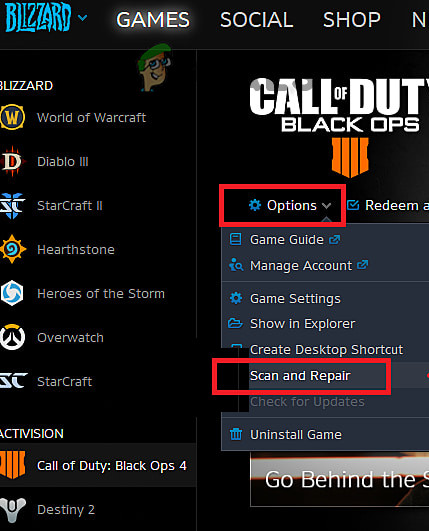
Scan and Repair the Call of Duty - Click Begin Scan.
- The launcher will scan for problems and fix or download any broken files.
- When the process is finished, see if the problem is solved.
5. Use PC Screen Only Option
Setting your display mode to “PC Screen Only” disables external monitors. This can reduce GPU strain and prevent display-related conflicts that may lead to crashes.
- Close Call of Duty and end its processes in Task Manager.
- Click the notification icon in the system tray.
- Click Project (or press Windows+P).
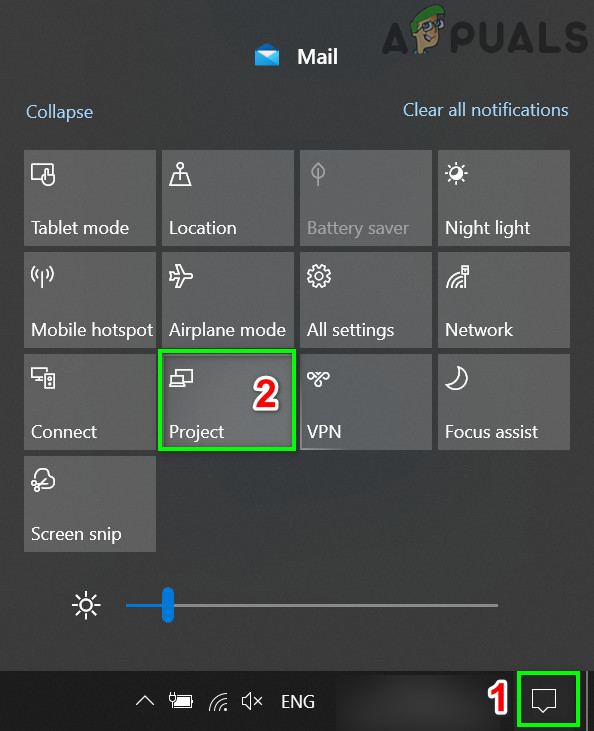
Open Project Setting in Notifications Center - Select “PC screen only”.
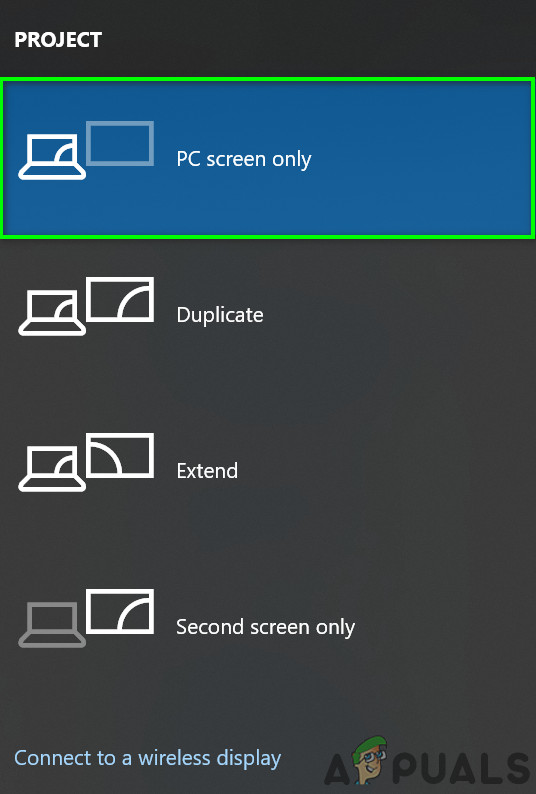
Choose the Option of Use PC Only - Start Call of Duty and see if the error is fixed.
6. Set the Game Window to Borderless
Running the game in borderless window mode can improve stability by preventing conflicts with graphics drivers that sometimes occur in full-screen mode. This way, background apps or sudden pop-ups are less likely to crash the game.
- Start Call of Duty, go to Settings, and open the Graphics tab.
- Find the Display Mode setting and choose Fullscreen Borderless.
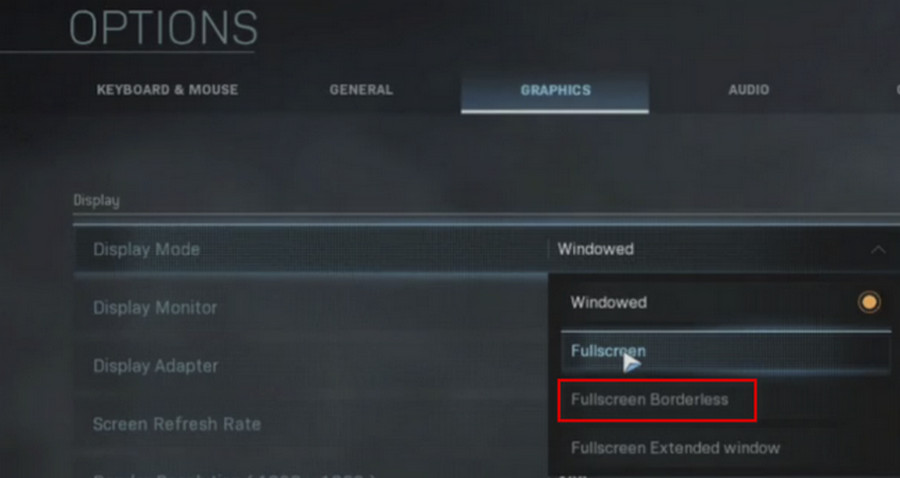
Change Display Mode to Fullscreen Borderless - Save your changes and see if Dev Error 6068 disappears.
7. Change Video Memory Scale
Adjusting the Video Memory Scale setting in the game restricts how much of your graphics card’s memory is reserved for Call of Duty. Lowering it lets the system use resources more efficiently, helping prevent crashes from memory overloads.
- Close Call of Duty and end all related processes in Task Manager.
- Open File Explorer.
- Go to this folder:
Documents\Call of Duty Modern Warfare\players
- Open the adv_options.ini file in Notepad.
- Look for the line VideoMemoryScale.
- Set the value of VideoMemoryScale to 0.5 (or lower, if needed).
- Save the file, start Call of Duty, and test if the error goes away.
8. Deactivate Game Overlay/Performance Monitoring Application
Overlays (like Discord or NVIDIA GeForce Experience) can interfere with Call of Duty and cause errors by disrupting how the game communicates with your graphics card. Disabling these overlays removes any potential conflicts and often improves game stability.
8.1 For Nvidia Overlay
- Exit the game and close any leftover Call of Duty processes in Task Manager.
- Open GeForce Experience.
- Go to the General tab.
- Scroll to In-Game Overlay and set the switch to Off.
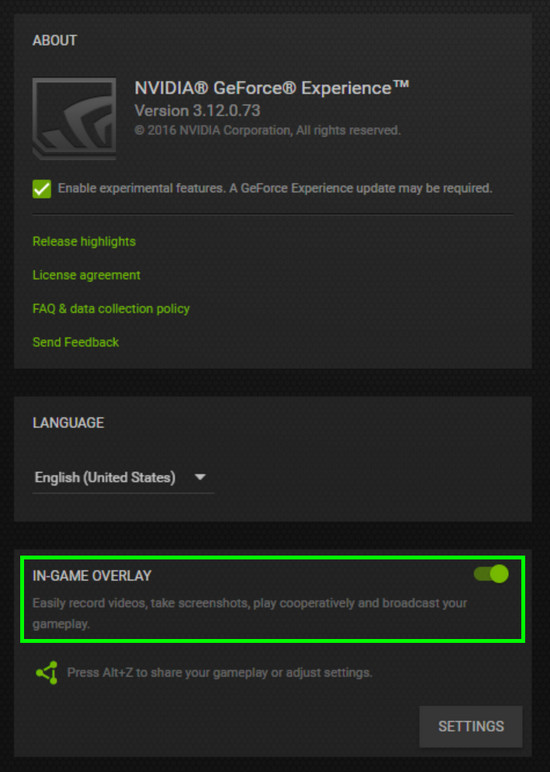
Disable In-Game Overlay of GeForce Experience - Exit GeForce Experience after saving your changes.
- Restart Call of Duty and check if the error is resolved.
8.2 For GameBar
- Close Call of Duty and end all processes in Task Manager.
- Press the Windows key, search for Gaming, then click Game Bar Settings.
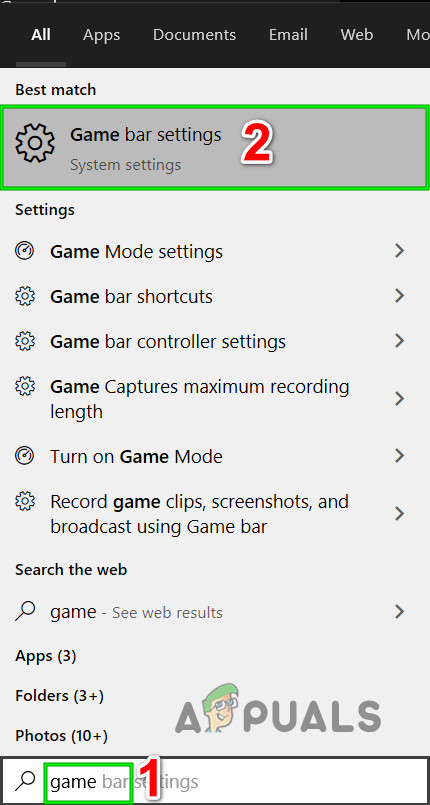
Open Game Bar Settings - In the Game Bar settings window, turn the Game Bar switch Off.
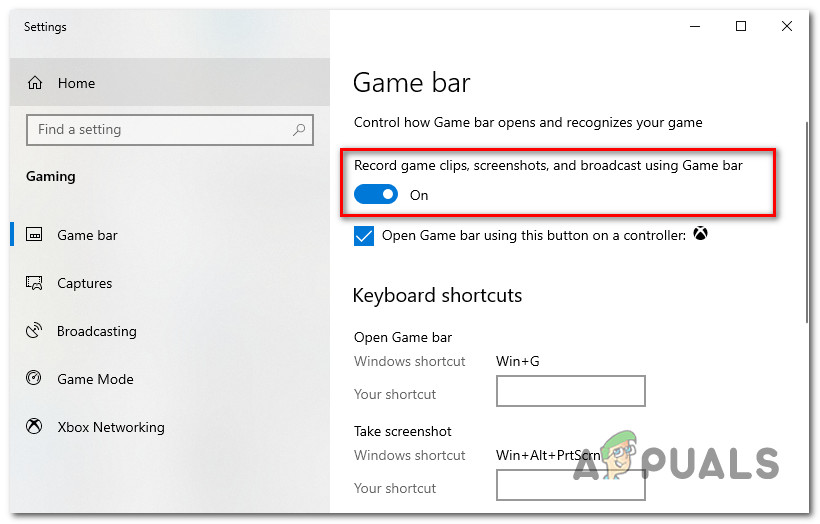
Disable the Game Bar from the Settings menu - Launch Call of Duty again to see if the problem is gone.
If you use any other overlay or system monitoring app, refer to its official documentation for steps on disabling it, then try running the game.
9. Use DirectX 11 for Call of Duty
DirectX 12 can cause compatibility issues on some systems. Running Call of Duty on DirectX 11 uses more proven and stable technology, which can resolve conflicts and reduce crashes.
- Open the Battle.net launcher and click Options.
- Select Game Settings.
- For Call of Duty, check the Additional Command Line Arguments box, then type -d3d11.
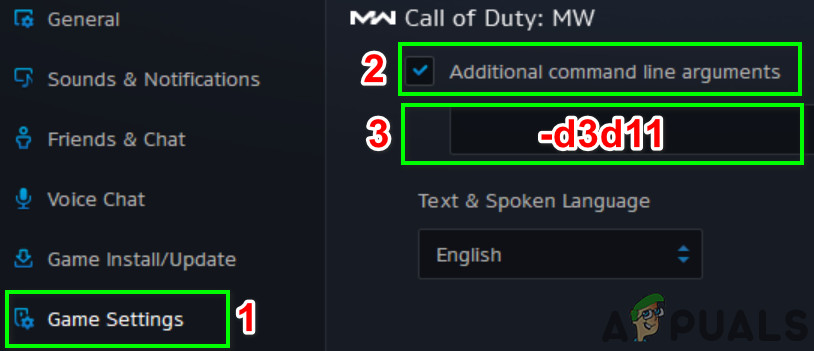
Additional Command Line Arguments - Start the game and see if this helps.
10. Clean Boot Your System
A clean boot limits your computer to only essential programs and services. This prevents unwanted software conflicts and helps isolate if a background app is causing the problem.
- Clean boot your computer following our instructions.
- Run Call of Duty as an administrator with no other apps running and see if the problem is fixed.
- If the game works, slowly enable other apps to find what caused the issue.
11. Tweaking the Shaders
Crashes sometimes come from corrupt or outdated shaders (the files responsible for lighting and effects in-game). Fixing or reinstalling these shaders ensures they match your current hardware and settings, often resolving crashes and glitches.
11.1. Reinstall Shaders
- Open Call of Duty and start a match or campaign.
- While in-game, trigger the reinstall shaders option.
- Continue playing as shaders install. If installation finishes mid-game, restart the shaders again. Keep reinstalling as needed during gameplay.
12. Delete the Players/Players 2 folder
Deleting the “Players” or “Players 2” folder makes Call of Duty regenerate all your configuration files. If any settings files are corrupted or incompatible, this reset can fix crashes and errors.
- Close Call of Duty and close any related background processes.
- Find the players folder, usually here:
Documents\Call of Duty Modern Warfare\
- Backup the Players (and Players 2) folder just in case.
- Delete the folders.
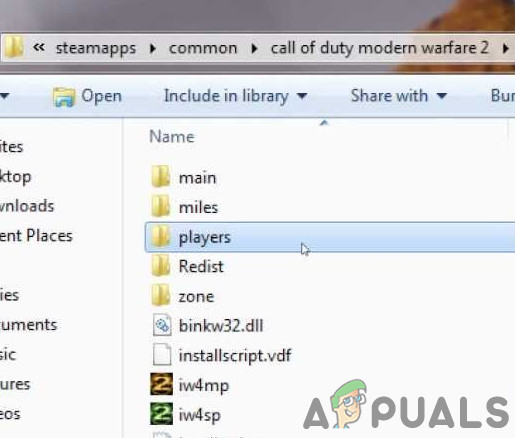
Backup and Delete Players Folder - Start Call of Duty and check if it helped.
13. Change the Settings
Adjusting graphics and performance settings—such as disabling ray tracing or lowering texture quality—can help the game run smoother, especially if crashes are caused by system overloads or compatibility issues with your graphics card.
13.1. Change the Vertical Sync
- Close Call of Duty.
- Open the NVIDIA Control Panel.
- Choose Manage 3D settings.
- Set vertical sync to “Adaptive Half Refresh Rate”.
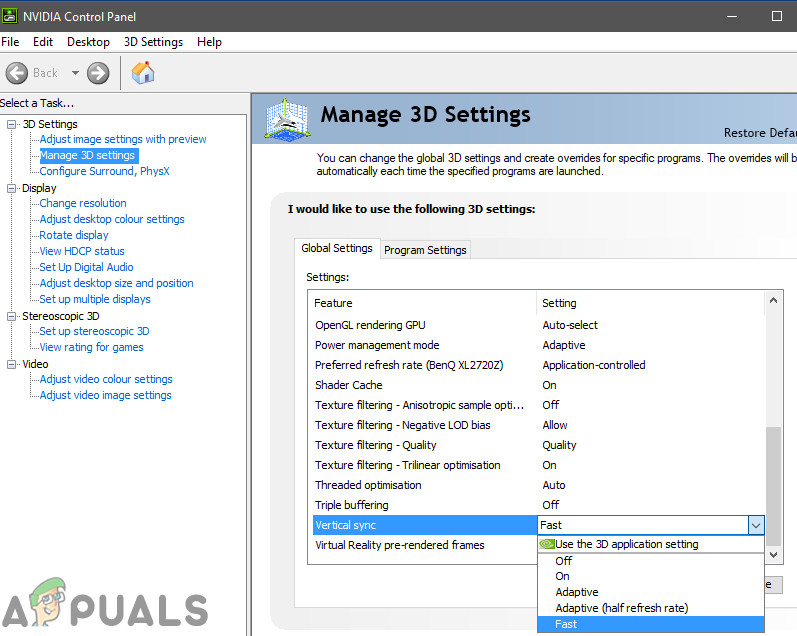
Turn off Vertical Sync - Relaunch the game and check for errors.
- If issues persist, try turning vertical sync off completely and test again.
13.2 Disable Ray Tracing
- Start Call of Duty, open Options, and go to Shadow & Lighting.
- Turn off Ray Tracing and see if the game becomes more stable.
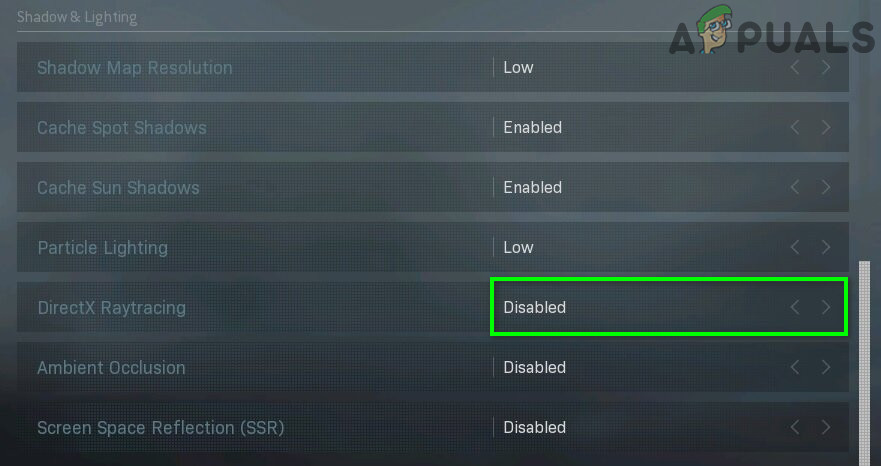
Disable Ray Tracing
13.3 Disable Crossplay
- Start the game and go to Options.
- Head to the Account tab.
- Find the Crossplay setting and choose Disable.
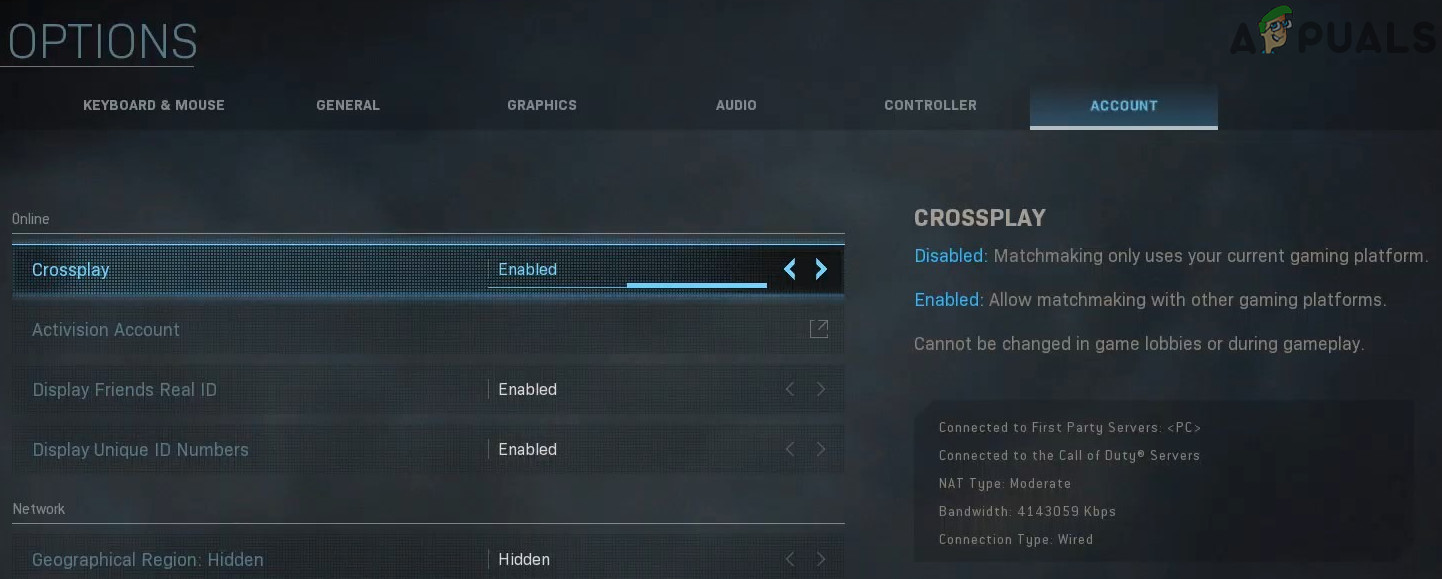
Disable Crossplay - Test if the error still happens.
13.4 Enable Server Latency
- Launch Call of Duty and go to Options > General.
- In the Telemetry section, turn on the Server Latency display.
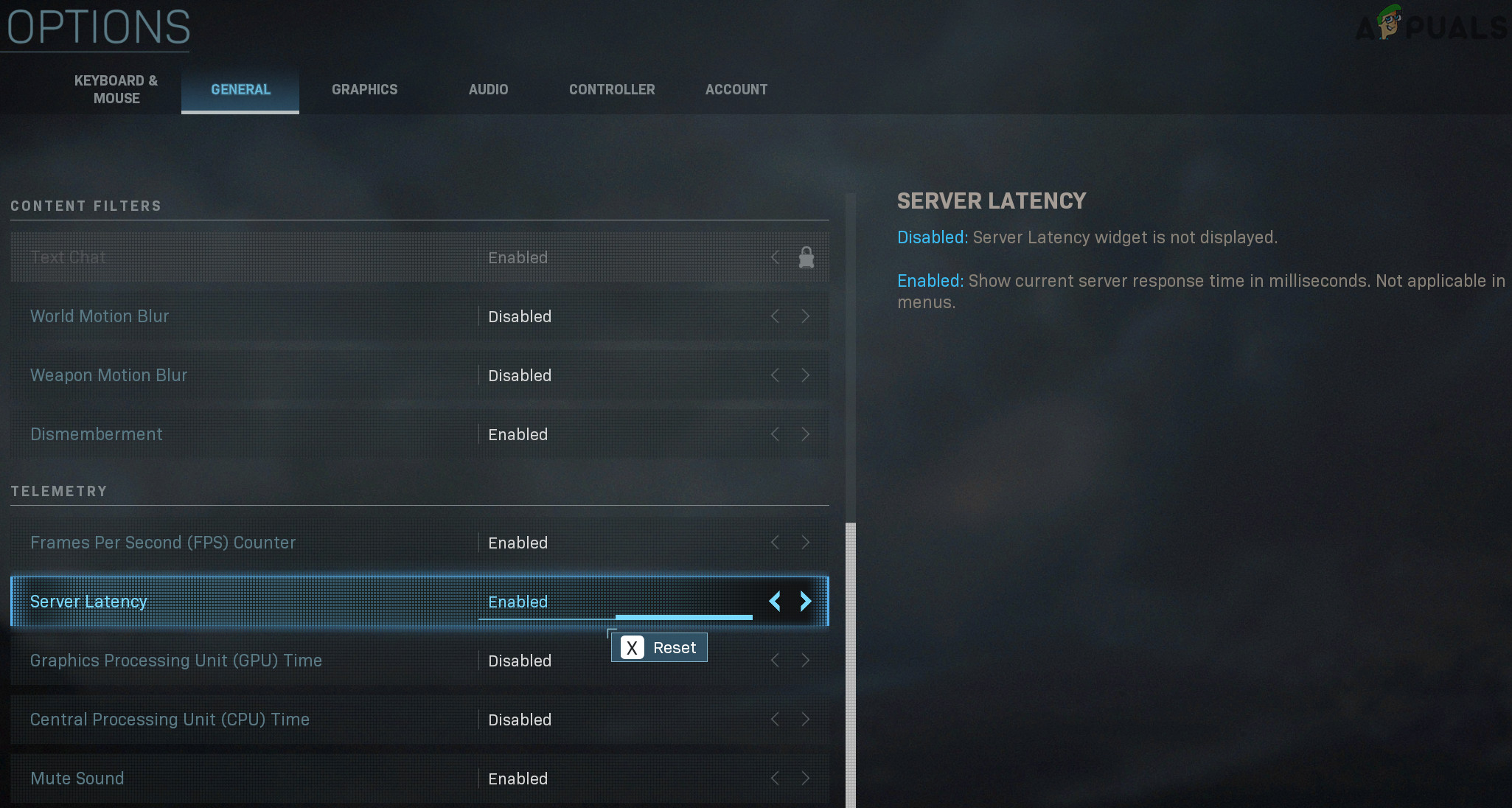
Enable Server Latency
13.5 Disable G-Sync
- Open the NVIDIA Control Panel.
- Expand the Display section, then click Set up G-Sync.
- Uncheck Enable G-Sync and see if the game works.
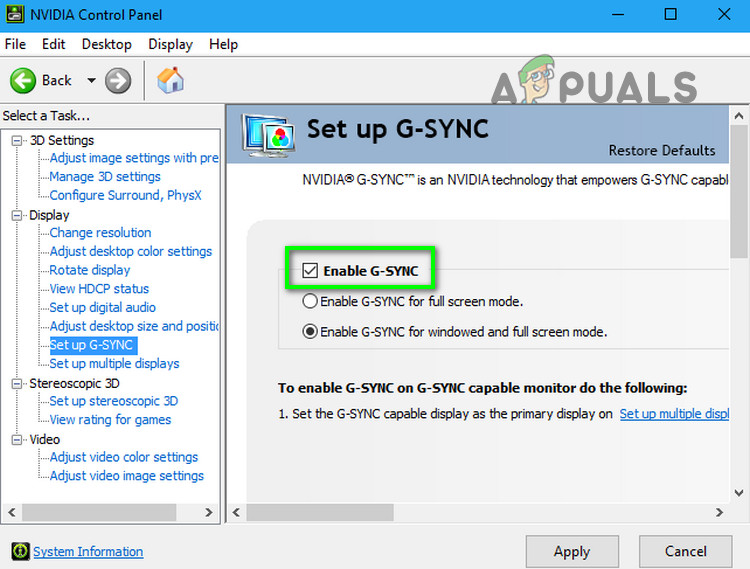
Disable G-Sync
13.6 Lower FOV
Reducing your field of view (FOV) can cut down on crashes. A higher FOV demands more from your system, sometimes leading to stutters or errors. Lowering the FOV eases this pressure and may improve stability.
14. Reinstall DirectX
DirectX is central to graphics performance in Modern Warfare. If it’s outdated or damaged, crashes may happen. Reinstalling DirectX ensures your game uses the right graphics API files.
- Reinstall DirectX using our complete guide.
- Once done, try playing the game again.
15. Disable Overclocking of CPU/GPU
Pushing your CPU or GPU beyond their stock speeds through overclocking can cause instability and errors in games. Reset any overclocking settings to manufacturer defaults if you experience persistent crashes.
- Lower your clock speeds. Refer to our overclocking guide for step-by-step instructions.
- Test Call of Duty again to see if it’s stable.
16. Reinstall the Game
As a last resort, a fresh game installation will clear up any corrupted files or bad installations. This step reinstalls all game data, including shaders and dependencies like DirectX.
- Open the Battle.net launcher and select Call of Duty.
- Click on the Uninstall Game button.
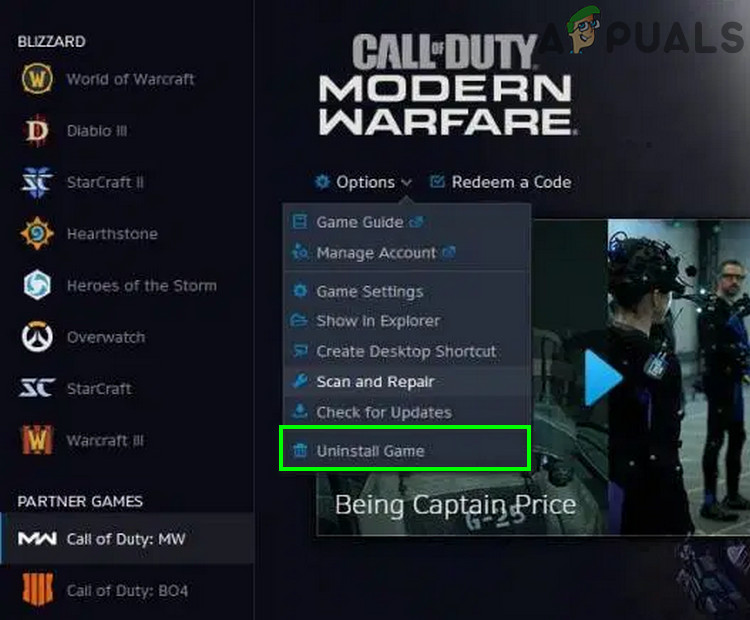
Uninstall Call of Duty - Follow the prompts to finish uninstalling.
- Restart your computer.
- Open Battle.net and reinstall Call of Duty to check if the issue is fixed.
17. Enabling XMP for your RAM (if applicable)
XMP (Extreme Memory Profile) helps your RAM run at its best speed. Enabling XMP in your BIOS can fix memory-related crashes and improve overall system reliability.
Learn more about how to enable XMP.
18. Change RAM
Faulty or mismatched memory can cause unpredictable issues, especially in demanding games. If you’ve tried everything else, replacing or upgrading your RAM can make your system more stable and prevent memory errors during gameplay.
19. Reset or Clean Install Windows
If the error still won’t go away after all troubleshooting, reinstalling or resetting Windows could be necessary. A fresh start clears any deeply embedded software conflicts or corrupted system files that might be causing the issue.
Check out our article on how to clean install Windows.





